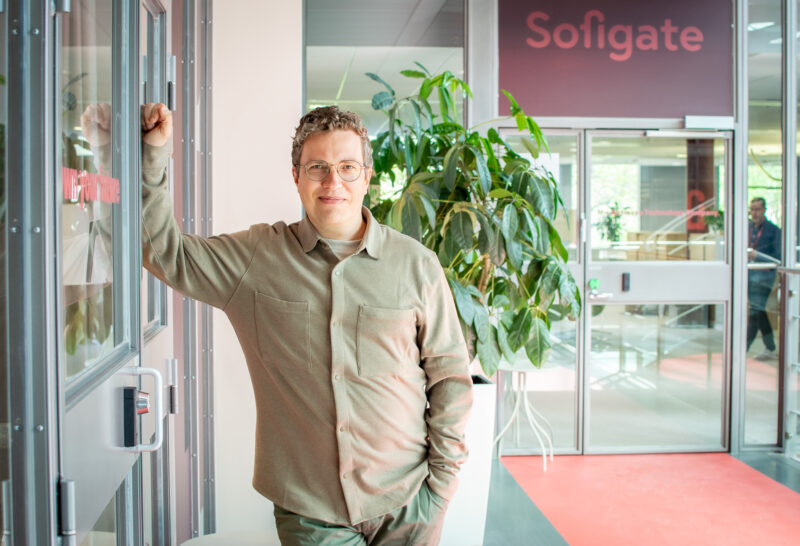Don’t outsource your change power to consultants – Here’s how to build your organisation’s change capability
True leaps in productivity are not achieved by technology alone – they require the continuous development of skills and ways of working across the entire organisation. That’s why companies must always lead their own change, argue Olivia Fränti and Antti Taskinen.
According to an old saying, you can feed someone for a day by giving them a fish – but if you teach them how to fish, they’ll never go hungry again. The same wisdom applies to technology investments in business.
Leading transformation initiatives takes time and expertise. It’s often tempting to hand the work over to external consultants. But that’s the equivalent of giving someone a fish: the new technology may help the organisation for a while, but once the consultants are gone and the technology inevitably evolves, the business is left behind. Before long, it’s hungry again – just like the person who had only one fish to eat.
That’s why it is far more sustainable for companies to take ownership of their transformation journey. When change initiatives are led in-house, the organisation not only drives the project but also strengthens its own capabilities and operating models in the process.
In other words, the organisation builds its change resilience. It becomes better equipped to adapt to future technological and business shifts, stay at the forefront of development, and achieve productivity breakthroughs – not just small incremental improvements. It learns to fish and can sustain itself in the long term.
From partner to coach
In the past, technology projects were lengthy, with a clear beginning and end. There were quieter periods between projects, when a company could focus solely on “business as usual”. But that’s no longer the case. Today, change is not project-based – it’s a permanent state. Likewise, business and technology are no longer separate domains. Every technology transformation is also a business transformation, and vice versa.
This brings a whole new set of requirements for organisational change capabilities. Companies still need the right technology and the right partners to succeed – but they can no longer outsource transformation or the thinking behind it. The organisation must lead its own transformation and continuously evolve its mindset and operating model. In fact, many productivity leaps don’t even require new technology – they come from making better use of existing business platforms and capabilities.
For executive leadership, this means business management must understand what technology can enable, and technology management must understand the organisation’s business goals. For example, it’s not realistic to expect AI to unlock significant business value if business management doesn’t understand what AI can do for them – or lack the ability to lead the organisation in realising its full potential.
At the same time, the role of technology partners is evolving. Gone are the days when consultants would arrive with all the know-how and take it with them when they left. Today’s partner is more like a coach – helping the organisation develop its own skills and build internal, organic change power.
Continuous change requires a culture of continuous learning
According to our 2024 market study, only just over 20% of organisations reported achieving significant productivity gains through their technology initiatives. And only 28% of business leaders agreed with the statement: “Our development initiatives build lasting capabilities within our organisation, and the learnings are not lost when the consultants leave.”
These two findings are closely connected. Outsourcing core thinking and competence development is one of four key barriers to a productivity leap. The other three – previously explored in this article series – are low ambition levels, organisational silos, and the illusion of employee involvement.
Developing internal, organic change power is closely tied to the shift from surface-level involvement to genuine engagement. It’s ultimately more about people than technology – about how the entire workforce is inspired to take part in change by sharing responsibility and creating a culture of continuous learning.
Download the guide to a productivity leap
This article series offers four practical steps to help companies remove the biggest barriers to productivity and take their performance to a whole new level. You’ll find the key takeaways in our market study report. Download the report here.
About the authors
Olivia Fränti leads and steers the Business Change Management unit at Sofigate, seamlessly integrating people, business and modern technologies to create tangible value in business technology transformations. She takes every encounter as a unique opportunity to connect on a deeper level – real change power stems from authentic presence and technological leadership.
Antti Taskinen is a Sales & Growth Director at Sofigate, and has worked with modern technologies for over 20 years – always at the forefront of the development. Antti strongly believes that successful transformation, powered by modern platforms and AI, not only drives business development, but also improves productivity, work quality and makes everyday work more meaningful.
Want to learn more?
We’re glad to tell you how we can help your organisation grow and develop – feel free to contact us!


